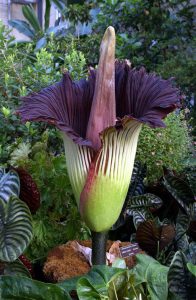Today Current Affairs: 21st May 2021 for UPSC IAS exams, State PSC exams, SSC CGL, State SSC, RRB, Railways, Banking Exam & IBPS, etc
Table of Contents
New Big 5 project:

It has named the five animals for framing instead of firing at. These are the elephant, polar bear, gorilla, tiger, and lion.
- All the New Big 5 animals are keystone species, essential to the balance of nature in their habitats, biodiverse ecosystems, and the survival of other species, including humans.
- It is an international initiative of more than 250 of the world’s wildlife photographers, conservationists, and wildlife charities.
- Created by British photographer Graeme Green.
- Its aim is to raise awareness about the crisis facing the world’s wildlife from threats including habitat loss, human-wildlife conflict, poaching, illegal wildlife trade, and climate change.
- Since its launch in April 2020, the project to list the animals received more than 50,000 votes from wildlife lovers.
Coviself: Self Testing Kit:

The Indian Council of Medical Research (ICMR) approved India’s first self-use Rapid Antigen Test (RAT) for Covid-19 named as CoviSelf.
- It is developed by MyLab Discovery Solutions, a Pune-based molecular company.
- ICMR is the apex body in India for the formulation, coordination and promotion of biomedical research, and is one of the oldest medical research bodies in the world.
- It uses a RAT and gives results within 15 minutes.
- This test is synced with a mobile app, CoviSelf, which will help directly feed the positive case’s report on the ICMR portal.
- ICMR has advised this test only for those who have symptoms or are high-risk contacts of positive patients and need to conduct a test at home.
- This test is not advised for general screening in public places of hawkers, show owners, or commuters.
Rapid Antigen Test:
- It is a test on swabbed nasal samples that detects antigens (foreign substances that induce an immune response in the body) that are found on or within the SARS-CoV-2 virus.
- It is a point-of-care test, performed outside the conventional laboratory setting, and is used to quickly obtain a diagnostic result.
- Like RT-PCR (Reverse Transcription Polymerase Chain Reaction), the RAT too seeks to detect the virus rather than the antibodies produced by the body.
- While the mechanism is different, the most significant difference between the two is time.
- In an RT-PCR test, RNA (Ribonucleic acid) is extracted from the swab collected from the patient. It is then converted into DNA (Deoxyribonucleic acid), which is then amplified.
- RT-PCR test takes a minimum of 2-5 hours whereas the maximum duration for interpreting a positive or negative test in RAT is 30 minutes.
India and Oman: MoUs on military cooperation as well as on maritime security:

India and Oman renewed the Memoranda of Understanding (MoUs) on military cooperation as well as on maritime security.
India-Oman Relationship:
- The Sultanate of Oman is a strategic partner of India and an important speaker at the Gulf Cooperation Council (GCC), Arab League and Indian Ocean Rim Association (IORA) fora.
- India is a member of IORA but not a member of GCC and Arab League.
- India and Oman are linked by geography, history and culture and enjoy warm and cordial relations, which are attributed to historical maritime trade linkages, the intimacy of the Royal family with India and the seminal role played by the Indian expatriate community in building Oman, which is acknowledged by the Omani Government.
- Institutional mechanisms like Joint Commission Meeting (JCM) and Joint Business Council (JBC) oversee economic cooperation between the two.
- Key bilateral agreements/MoUs cover cooperation in Defence; peaceful uses of Outer Space; Extradition; Legal and judicial cooperation in civil and commercial matters; Agriculture; Civil Aviation; Avoidance of Double Taxation; Maritime issues; etc.
- In West Asia, Oman is one of India’s oldest defence partners and an ally in anti-piracy campaigns.
- India has supplied rifles to Oman. Also, India is considering setting up a defence production unit in Oman.
- India and Oman conduct regular biennial bilateral exercises between all three services.
- Army exercise: Al Najah
- Air Force exercise: Eastern Bridge
- Naval Exercise: Naseem Al Bahr
Strategically Significant Highway : China:

China has completed the construction of a strategically significant highway enabling greater access to remote areas along the disputed border with Arunachal Pradesh in India.
- The construction began in 2014 and is part of a wider infrastructure push in border areas in Tibet.
- The highway passes through the Grand Canyon of the Brahmaputra river (Yarlung Zangbo in Tibet).
- The Brahmaputra is the longest river in Tibet and its valley is the world’s deepest with a 7,000-metre drop from the highest mountain peak to the lowest basin.
- It connects Pad Township in the city of Nyingchi and Medog County.
- Nyingchi and Medog County both are located in Tibet Autonomous Region (TAR), China.
- Medog is the last county in Tibet, which is located close to the Arunachal Pradesh border.
- China claims Arunachal Pradesh as part of South Tibet, which is firmly rejected by India.
- The India-China border dispute covers the 3,488-km-long Line of Actual Control (LAC).
- The Highway will shorten the road length connecting the city proper of Nyingchi and Medog County and will reduce the travel time by eight hours.
World Bee Day:

On the occasion of World Bee Day, Union Agriculture Minister launched the project to establish a regional honey quality testing laboratory at the Indian Agricultural Research Institute (IARI), Pusa, New Delhi.
- It has been set up for quality testing of honey and other products of beekeeping under the National Beekeeping and Honey Mission.
- 300 crore has been approved for the overall promotion of National Beekeeping & Honey Mission (NBHM), development of scientific beekeeping, and achieving the target of “sweet revolution”. Besides, Rs 500 crore has been allocated to NBHM by the Centre under the Atmanirbhar Bharat Campaign.
- A world-class state of art Honey Testing Lab has been established at the National Dairy Development Board (NDDB), Anand with the help of Rs 5 crore.
- The UN has designated 20 May as World Bee Day. The fourth observance of World Bee Day was celebrated by the FAO on 20 May 2021 under the theme “Bee engaged – Build Back Better for Bees”.
INS Rajput Will Be Decommissioned:

INS Rajput will be Decommissioned on 21 May 2021 at Naval Dockyard, Visakhapatnam.
- INS Rajput is the first destroyer of the Indian Navy.
- INS Rajput, the lead ship of the Kashin-class destroyers built by the erstwhile USSR was commissioned on 04 May 1980
- INS Rajput was constructed in the 61 Communards Shipyard in Nikolaev (present-day Ukraine) under her original Russian name ‘Nadezhny’ meaning ‘Hope’.
- The keel of the ship was laid on 11 Sep 1976 and she was launched on 17 Sep 1977.
- The ship was commissioned as INS Rajput on 04 May 1980 at Poti, Georgia by IK Gujral.
The ‘corpse flower’:

Over a thousand people queued up outside an abandoned gas station in San Francisco’s Bay Area this week to catch a glimpse of the extremely rare and aptly named ‘corpse flower’.
- The ‘corpse flower’ is a flowering plant, which is native to the rainforests of Sumatra in Indonesia.
- The scientific name of the rare plant, Amorphophallus titanum, quite literally translates to giant, misshapen phallus — presumably due to its appearance.
- In about a decade, the ‘corpse flower’ can grow to be up to 10 feet tall and unveil two of its key components a deep red skirt-like petal known as the spathe and a yellow rod-like ‘spadix’.
- Another crucial component of the plant is the ‘corm’, a fleshy underground plant stem that acts as a storage organ where the corpse plant’s energy is stored.
- The unique plant is said to have the biggest corm in existence, sometimes weighing around 100 kgs.
- The corpse flower is known to be one of the world’s largest ‘unbranched inflorescence’ or a stalk bearing a cluster of flowers.
- The average corpse flower has a lifespan of about three-four decades.
- Apart from its appearance, the flower is known for its pungent stench, which is said to be similar to rotting meat or a decaying cadaver.
- The plant emits a distinct smell only when it is in bloom, which happens once every 10 years or so and only for a brief period of time.
- The main odorant which gave the flower its distinct smell was dimethyl trisulfide, the same compound that is emitted from cancerous wounds, microorganisms, and some vegetables.
Mucormycosis: An Epidemic Under Epidemic Diseases Act 1897:

The Union government has asked the States to declare mucormycosis, the fungal infection being reported in COVID-19 patients, an epidemic under the Epidemic Diseases Act 1897.
- Declaring the black fungus infection seen in COVID-19 patients an epidemic would lead to health facilities screening for it and reporting all such cases to the government.
- Rajasthan, Telangana, and Tamil Nadu have declared it an epidemic.
- Mucormycosis or black fungus is a complication caused by a fungal infection.
- People catch mucormycosis by coming in contact with the fungal spores in the environment.
- The disease is being detected among patients who are recovering or have recovered from covid-19.
A-76 : World’s Largest Iceberg

A giant slab of ice bigger than the Spanish island of Majorca has sheared off from the frozen edge of Antarctica into the Weddell Sea, becoming the largest iceberg currently afloat in the world, the European Space Agency said.
- The newly calved berg, designated A-76 by scientists, was spotted in recent satellite images captured by the Copernicus Sentinel-1 mission.
- Its surface area spans 4,320 square km (1,668 square miles)and measures 175 km long by 25 km wide.
- By comparison, Spain’s popular tourist island of Majorca in the Mediterranean occupies 3,640 square km (1,405 square miles).
- The U.S. state of Rhode Island is smaller still, with a landmass of just 2,678 square km.
- The enormity of A-76, which broke away from Antarctica’s Ronne Ice Shelf, ranks as the largest existing iceberg on the planet, surpassing the now second-place A-23A, about 3,380 square km (1,305 square miles) in size and also floating in the Weddell Sea.




